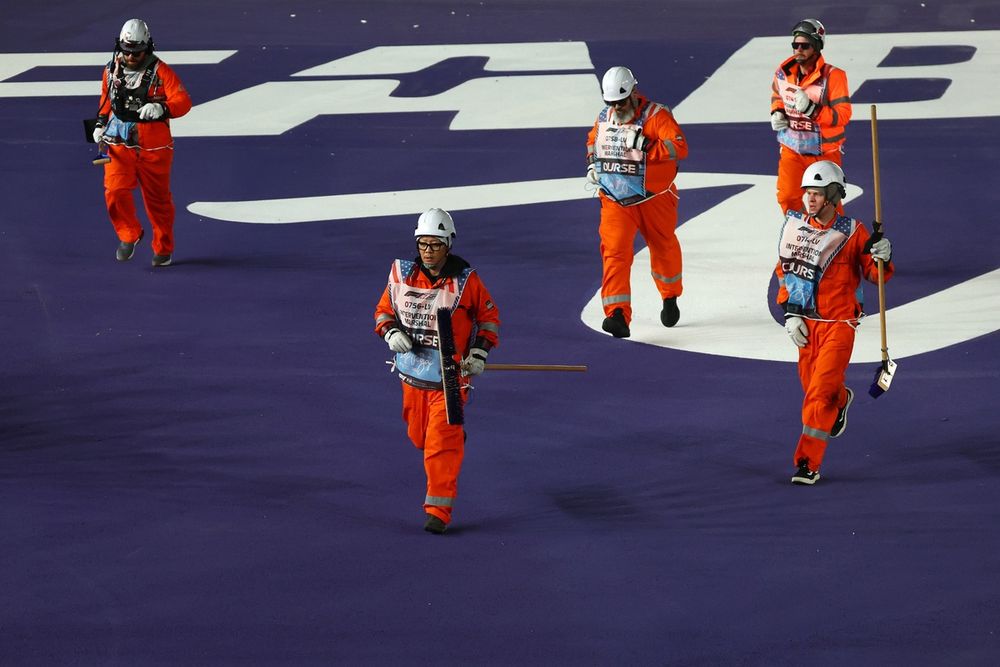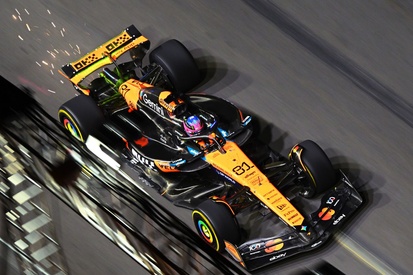Two competitions following a Formula 1 event saw backlash from race officials due to a narrow escape involving two marshals andLiam LawsonAt...
Two competitions following a Formula 1 event saw backlash from race officials due to a narrow escape involving two marshals andLiam LawsonAt the Mexico Grand Prix, the timing of a marshal's action during the race once more sparked debate in Las Vegas.
Following a multi-vehicle collision at the beginning of the Las Vegas night race, debris scattered into the Turn 1 runoff zone. Officials were sent from the marshal station located on the track's outer side — the drivers' right — to clear the fragments so that the cars could resume racing during the second lap.
After removing the different pieces of wreckage, marshals were observed sprinting back toward the fence as the leader approached.Max Verstappenwas on the verge of crossing the start-finish line a few hundred meters earlier, as race control opted to maintain a double yellow flag instead of implementing a virtual safety car procedure.
The event faced backlash from analysts, including Niels Wittich, a subject-matter expert – the former FIA race director who was succeeded by Rui Marques 12 months ago.
This must not occur; this is an entirely unacceptable situation," Wittich said to Sky Sports Germany. "Of course, you always have the setup, particularly at Turn 1 during every start, where the marshals are put into action or at least remain on standby. This is because it's the largest controlled gap you have at the start, and once the last car has passed, any debris or parts that need to be collected can be addressed.
But for it to take so long that the cars are essentially returning on their flying lap — a double yellow flag is no longer sufficient at this stage. That is simply incorrect, and I fail to understand how this has occurred for the second time this year.

Wittich is pointing to the latest Mexico race, whenRacing BullsDriver Lawson faced two marshals while they were collecting debris. No complete explanation has been provided for the event, but it is anticipated that details will be released soon, as officials from the Mexican federation were present in Las Vegas to address the matter.
But Articlepedia Today recognizes that the FIA perceives these two incidents in a different manner. Regarding Turn 1 in Las Vegas, race control felt confident in deploying marshals under double yellow flags because the debris requiring collection was entirely situated off the racing line in the Turn 1 runoff area—on the same side of the track as the marshal post, meaning the officials did not have to cross a live portion of the track.
Since the final corner is a blind, straight bend, the double waved yellow zone was stretched to before the corner to make sure drivers begin to reduce speed in time.
Read Also:Although marshals were still heading back to their positions as the line of cars approached once more, the view from Verstappen's in-car camera convinced the FIA that, after reviewing the event, they had made the right decision in retrospect.
The virtual safety car was deployed one lap later due to debris on the outer part of Turn 2, resulting from the initial collision at the start. In this situation, Articlepedia Today reports that race control determined that double yellow flags were no longer adequate to handle the situation because the front wing fragment was near the racing line and necessitated marshals crossing the track.
The FIA's explanation still fails to fully address why the marshals took such an extended time to remove the debris in Turn 1, and whether race control should have remained cautious by activating a virtual safety car once it became evident that the marshals would not return behind the barriers as swiftly as hoped.





